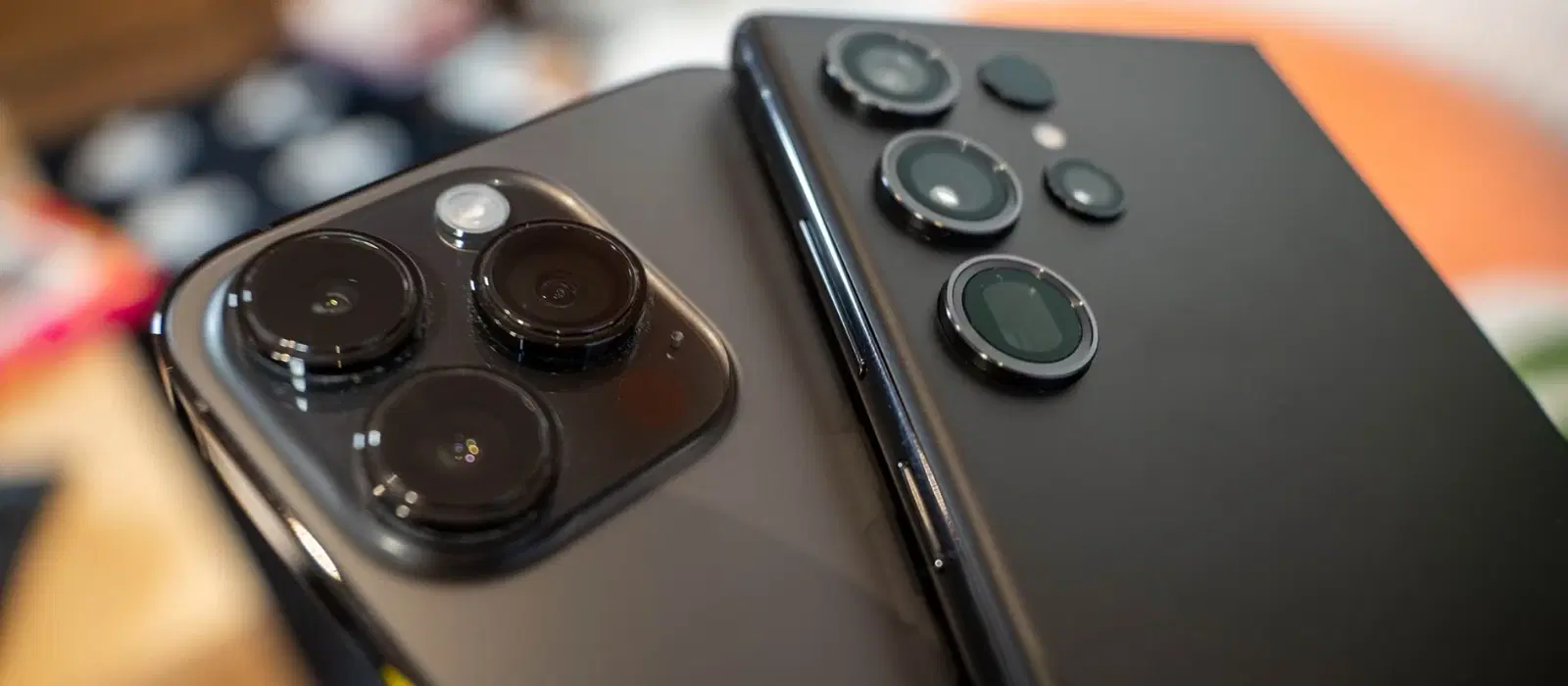
Consumer Electronics
•04 min read
The global smartphone arena thrives on innovation and a relentless drive for excellence. By delving into the dynamics between two leaders in the consumer electronics realm, this blog post provides a comprehensive exploration of the smartphone market share comparison, including insights into sales trends, revenue dynamics, and factors shaping industry movements such as customer rewards like NeuCoins.
Market share measures a company’s share of the market by looking at its sales. This indicator reflects brand strength and consumer behavior, showing how well a company resonates with its audience. In the competitive smartphone industry, understanding market share helps recognize which brands drive trends and capture consumer trust.
The global smartphone market is an ever-evolving landscape brimming with opportunities. Over the past decade, the industry has witnessed significant growth alongside shifts in product innovations and consumer preferences. While several players make their mark each year, the battle for leadership remains a riveting story of strategic moves, innovation, and brand loyalty.
The journey over the last ten years highlights the impressive milestones each brand has achieved. As both brands unveil their flagship devices, notable trends emerge, including surges in market share following breakthrough product launches and software innovations. This narrative of technological evolution mirrors broader shifts in the global marketplace, revealing how consumer expectations have been reshaped over time.
A closer look at different regions offers nuanced insights into the spread of influence. While some areas have embraced premium smartphone experiences with enthusiasm, other regions appreciate a broader array of options. This variation underscores the importance of tailoring offerings to meet local demands. In key markets such as North America, Europe, Asia-Pacific, and emerging regions like India, distinct trends have emerged that highlight the unique appeal of each brand.
Insight Corner: Did You Know?
Apple's market share grew by 58.5% year-over-year for Q3 2024, while Samsung's share saw a decline of 19.7%. This impressive shift highlights how Apple’s focus on the premium smartphone segment is resonating with its loyal customer base, according to a 2024 report by [Research Firm].
Unit sales provide a tangible measure of a brand's popularity. Over recent years, both brands have shown varied performance, with consumer preferences shifting in response to innovations, pricing strategies, and evolving trends. A focus on flagship models has seen distinct peaks in sales, revealing how each brand successfully taps into diverse buyer needs. Whether it is the allure of refined user experience or the appeal of flexible pricing options, the numbers speak to the evolving tastes of smartphone users.
Revenue tells a different story—a tale of profitability and value capture. The higher average selling price of some premium smartphones drives substantial revenue figures, reflecting a strategic emphasis on quality and innovation. In contrast, a more varied product range can appeal to a wider audience, even if unit sales dictate a different narrative. Balancing these elements remains a key focus, as industry leaders continually adapt to maximize both consumer satisfaction and business performance. Earn up to 5% NeuCoins on every purchase through Tata Neu, reflecting a commitment to rewarding customer loyalty.
Innovation drives shifts in market dynamics. Advances in technology—from ground-breaking camera systems to AI integration and sustainability initiatives—define market trends. For instance, cutting-edge features paired with user-friendly designs broaden technology’s appeal. Such innovations build robust ecosystems, reinforcing trust in these transformative devices.
Effective marketing is about building trust and reliability. Through unique strategies and a deep understanding of customer needs, brands establish strong emotional connections with their audience. Tata Neu exemplifies this with express delivery services—orders placed before 6 PM receive Express Delivery—and after-sales support features like ZipCare services. These customer-first strategies reinforce loyalty and elevate brand experiences over time.
External factors such as economic conditions, changes in consumer spending, and supply chain dynamics influence market share. Shifts in global economic landscapes and fluctuating consumer confidence can temporarily impact sales trends. However, robust after-sales support and prompt service assure customers of ongoing value, similar to the care and expertise found on platforms known for their unmatched service and support.
Emerging trends like the rapid adoption of 5G, a growing emphasis on sustainability, and the integration of advanced technologies such as artificial intelligence are set to define the next chapters of the smartphone story. The industry is poised to evolve faster than ever, with customer experiences at the center. Consumers can expect smarter, more connected devices that drive functionality and align with contemporary values.
Expert analyses suggest that the battle for market share will intensify as brands innovate and adapt to emerging consumer needs. Historical trends indicate varied strengths in unit sales and revenue strategies, while future projections remain cautiously optimistic. The evolving ecosystem, bolstered by robust after-sales support and customer-first rewards like NeuCoins, will guide the trajectory of market leadership within the smartphone industry.
While one brand often leads regionally, each dominates in different segments, reflecting distinct consumer preferences. This smartphone market share comparison highlights their strengths.
Unit sales differ due to a broader product range versus a focus on premium offerings, leading to varying success across different markets.
Each brand has its unique strengths, with one being renowned for its profitability and innovation, while the other boasts extensive product diversity.
Although unit sales indicate a lead for one brand in global markets, revenue figures tell a more nuanced story of value and consumer trust.
In summary, both brands continue to steer the global smartphone market with distinct strategies that underline their varying strengths. One brand may excel in unit sales and diversified offerings, while the other leverages innovation and a premium market approach to secure higher revenue and enduring customer loyalty. This detailed comparison offers a snapshot of the ongoing evolution in the mobile phone industry, highlighting key areas of growth and the critical factors steering future trends. As the journey continues, the emphasis on innovation, customer-first values, and consistent after-sales support remains paramount—ensuring that the digital shopping experience evolves seamlessly, much like the reliable and rewarding Tata Neu experience.